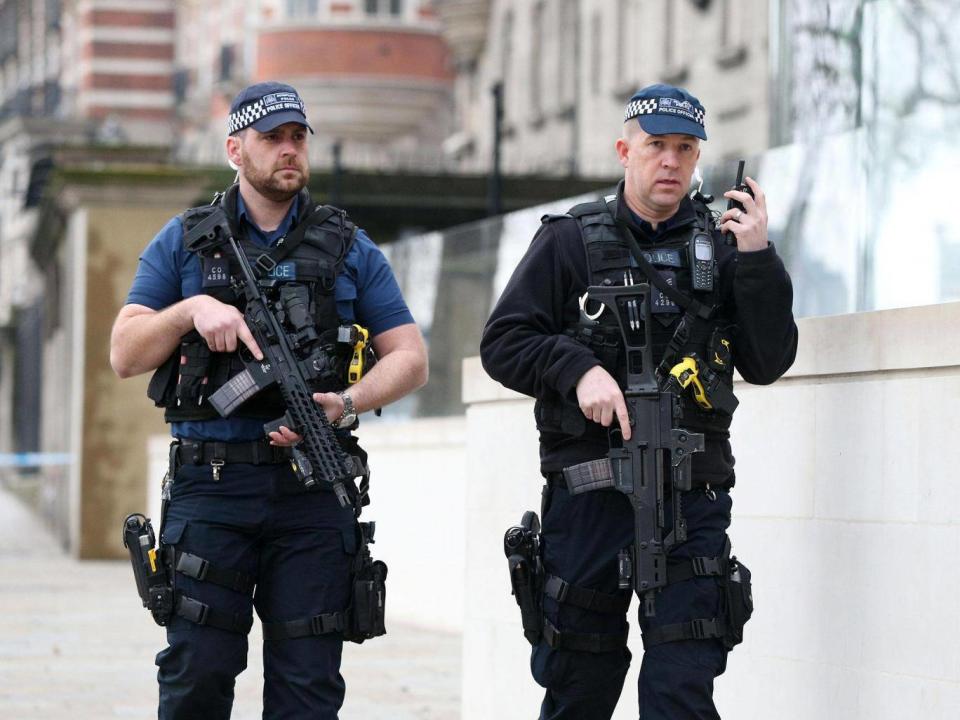Westminster inquests: Barriers not installed on bridge before attack because police did not believe they were needed
Barriers were not installed along Westminster Bridge before last year’s terror attack because it was “not seen as a location that needed them”, a senior police officer has revealed.
Chief Superintendent Nick Aldworth told inquests into the five victims’ deaths that there had been no “specific threat” against the bridge after Isis-inspired lorry attacks in Nice and Berlin.
The Metropolitan Police officer, who leads national strategies to protect the UK from atrocities, said there was no cause “to mitigate against that threat” before Khalid Masood launched his attack in March 2017.
Dominic Adamson, a lawyer representing two of the five victims’ relatives, questioned why the decision had not been made to introduce barriers on the bridge following Isis vehicle attacks in Europe.
“It was not seen as a location where we needed to have barriers,” Chief Supt Aldworth replied, saying that they could have been put in place if police received information that it was a potential target.
The bridge, which links the Houses of Parliament to the London Eye and Waterloo – the UK’s busiest railway station – has since been fitted with metal barriers.
They have also been placed on London Bridge, which was targeted in another terror attack in June 2017.
Mark Lucraft QC, chief coroner of England and Wales, said the Westminster Bridge Inquests would hear evidence on issues “which may be relevant to the deaths” of Masood’s victims, including “physical security measures on Westminster Bridge”.

The inquests are probing the impact of security arrangements around the Houses of Parliament and body armour worn by PC Keith Palmer when he was stabbed to death.
The Old Bailey in London previously heard that armed officers patrolling the area had not visited Carriage Gates, where the victim was posted, for almost an hour before Masood struck despite official guidelines saying they should have been “in close proximity”.
Isis first issued instructions on using vehicles for massacres in an issue of its English-language propaganda magazine that was published online in November 2016.
The terrorist group said the “deadly and destructive capability” of cars and lorries could be harnessed because they were legal and “extremely easy to acquire”.
The article gave followers detailed advice on what kind of vehicles to use for maximum damage and urged them to carry a secondary weapon to inflict more damage after crashing – a Masood appears to have followed.
The inquests previously heard that the terrorist conducted internet searches on Isis and ranted about the group to his wife, telling her they were “not the enemy”.
The Old Bailey also heard that Masood was a controlling and arrogant person who believed he was “a genius” with a “special relationship” with God.
A psychological profile suggested he had a track record of being unable to form long-term relationships, partly due to his inability to empathise with others and understand the nuances of the human condition.
Dr Brock Chisholm said there was no evidence Masood was suffering from a psychotic illness when he launched the attack, but that his conversion to Islam was seen to be “containing the chaos within him“.
“Masood believed he was more intelligent than other people,” he added. “He enjoyed dominating people and viewed himself as special in the eyes of God ... indeed, like a genius.”
Told that Masood’s CV was found in the car used to carry out the attack, Dr Chisholm said he may have been seeking recognition or in two minds over whether or not to go through with the rampage.
A previous review of intelligence gathered before the terror attacks that struck London and Manchester last year found that Masood was not under surveillance and neither MI5 or the police “had any reason to anticipate the attack” despite his extremist links.
The 52-year-old, who converted to Islam in prison, sent his own jihad manifesto to contacts, including his wife from behind the wheel of his hired car before ploughing it into pedestrians on Westminster Bridge.
He fatally struck pensioner Leslie Rhodes, 75, mother-of-two Aysha Frade, 44, American tourist Kurt Cochran, 54, and Romanian tourist Andreea Cristea, 31, before crashing the vehicle and stabbing PC Palmer to death outside the Houses of Parliament.
A separate inquest into the death of Masood, who was shot dead by armed protection officers during the attack, will take place at a later date.
Additional reporting by PA

 Yahoo News
Yahoo News 
